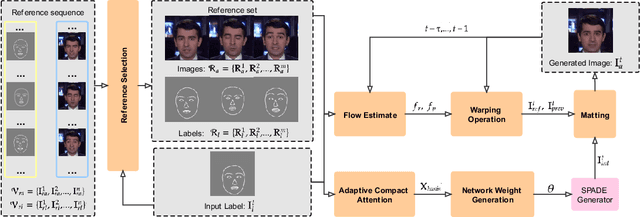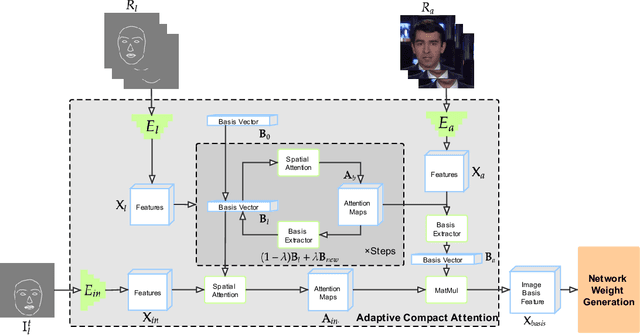Adaptive Compact Attention For Few-shot Video-to-video Translation
Paper and Code
Nov 30, 2020



This paper proposes an adaptive compact attention model for few-shot video-to-video translation. Existing works in this domain only use features from pixel-wise attention without considering the correlations among multiple reference images, which leads to heavy computation but limited performance. Therefore, we introduce a novel adaptive compact attention mechanism to efficiently extract contextual features jointly from multiple reference images, of which encoded view-dependent and motion-dependent information can significantly benefit the synthesis of realistic videos. Our core idea is to extract compact basis sets from all the reference images as higher-level representations. To further improve the reliability, in the inference phase, we also propose a novel method based on the Delaunay Triangulation algorithm to automatically select the resourceful references according to the input label. We extensively evaluate our method on a large-scale talking-head video dataset and a human dancing dataset; the experimental results show the superior performance of our method for producing photorealistic and temporally consistent videos, and considerable improvements over the state-of-the-art method.
 Add to Chrome
Add to Chrome Add to Firefox
Add to Firefox Add to Edge
Add to Edge